When Meghan Markle ties the knot with Prince Harry this May with their highly anticipated royal wedding at St. George’s Chapel, she’ll also be revealing something that’s been a point of intrigue since the couple announced their engagement last year: her royal wedding dress.
With Markle’s wedding dress, the former actress will join a long history of British Royal Family brides whose style and sartorial selections for their British royal wedding dresses through the years have affected the fashion trends of brides everywhere. Take for instance, Queen Victoria’s white lace and silk gown, which popularized the tradition of brides wearing white or consider the lasting influence that Catherine, Duchess of Cambridge’s v-neck and lace Alexander McQueen dress by Sarah Burton still has on the wedding market today.
Before Megan Markle walks down the aisle to say “I do,” here’s a look back on the iconic British Royal Family brides who came before her and the royal wedding dresses they wore for their big days.
Queen Victoria (m. 1840)
Queen Victoria is largely credited with starting the popular tradition of brides wearing white to their weddings after she selected a gown made of silk, satin, and lace to wear while saying her vows to Prince Albert. According to Vogue, Victoria picked the white shade not to symbolize her purity, as the tradition usually insinuates now, but because she wanted to highlight the lace on her dress to greater effect. The stylish queen also had some bridal demands: no one else could wear white at her wedding and she had the pattern for her wedding dress destroyed after the dress was made so that it couldn’t be replicated.
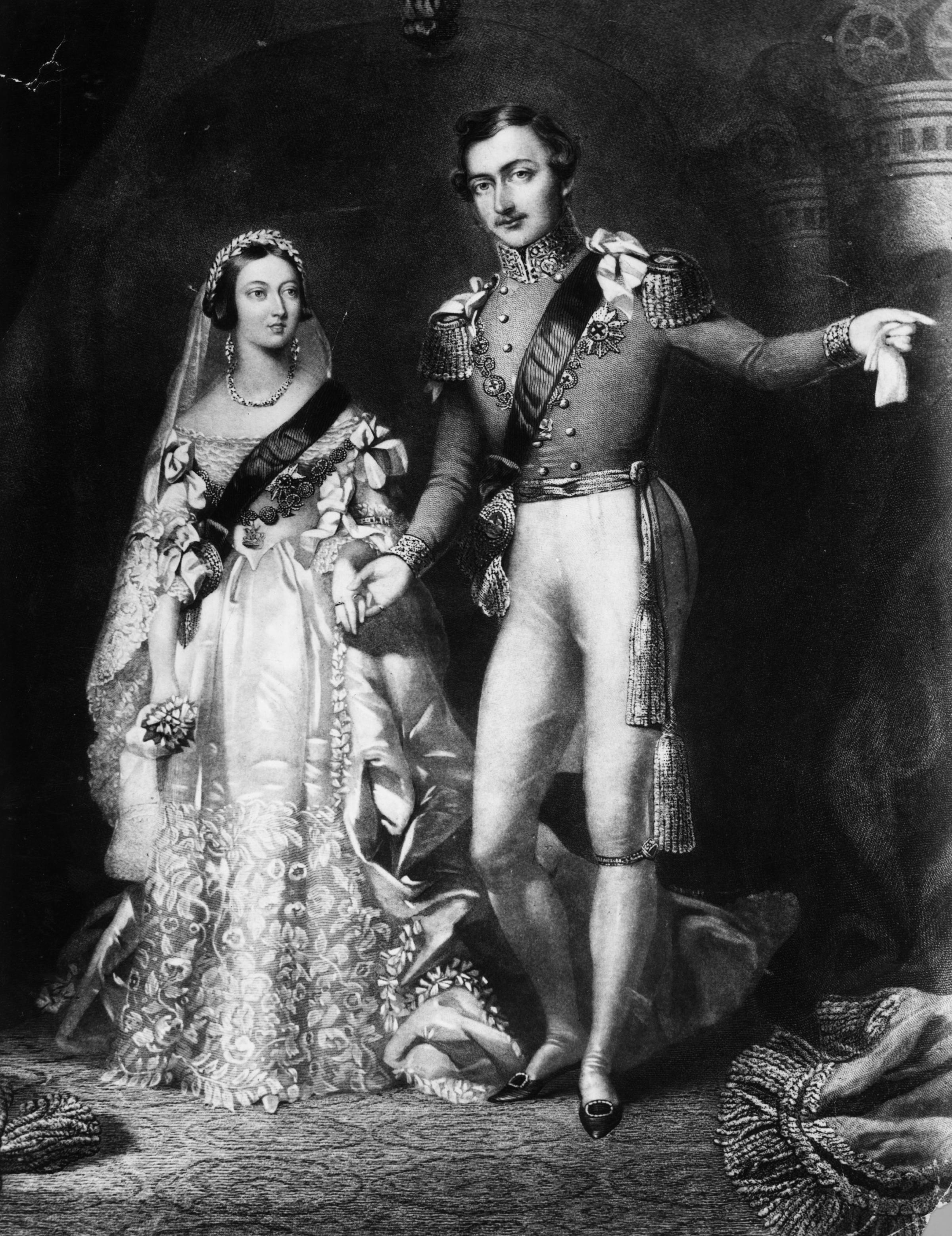
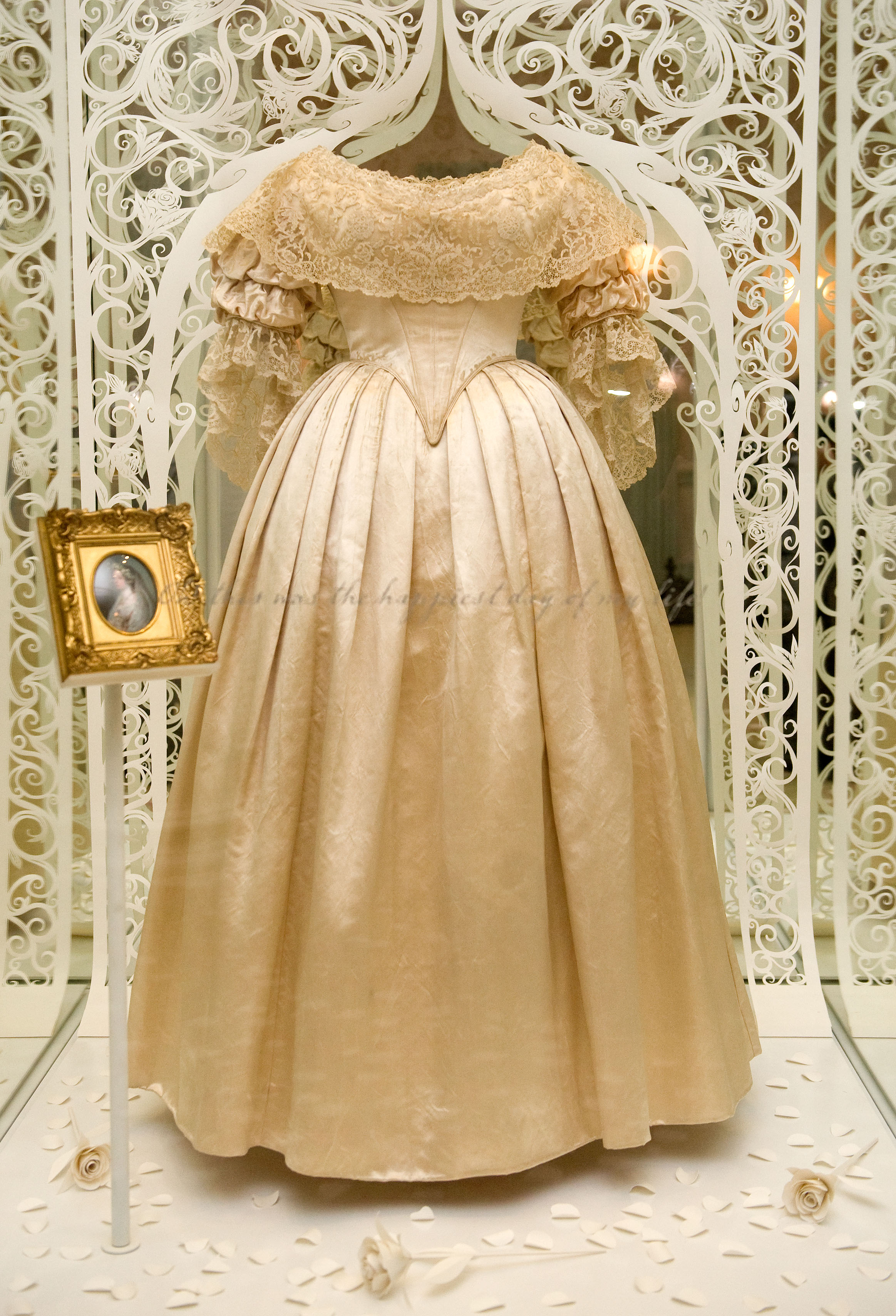
The Queen Mother, then Lady Elizabeth Bowes-Lyon (m. 1923)
When Queen Elizabeth — then Lady Elizabeth Bowes-Lyon — married Prince Albert, the Duke of York (later King George VI), in 1923, she wore a wedding ensemble that definitely reflected the times. Her pearl and silver thread embroidered silk crepe moire (a fabric with a ripply effect) gown was designed by Madame Handley Seymour and had a dropped waist. The flapper-esque British royal wedding dress was perfectly complemented by a delicate Juliet lace cap.
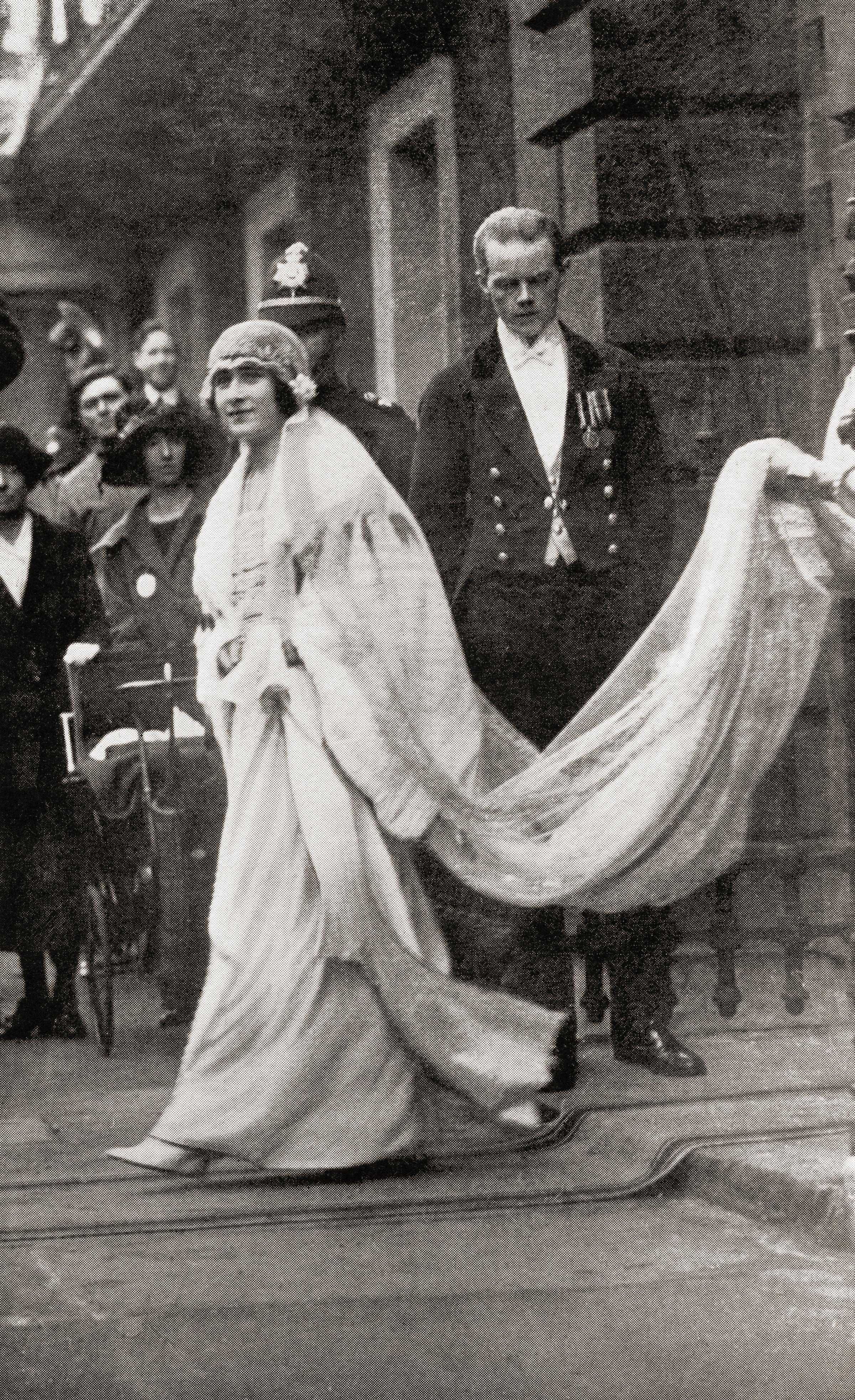
Wallis Simpson, Duchess of Windsor (1937)
Wallis Simpson’s third marriage, to Edward, Duke of Windsor, scandalized the country because he abdicated the throne of King of England to wed a twice-divorced American socialite. For her wedding, Wallis wore a silk crepe dress designed by a fellow American expat, Mainbocher, who was working in Paris. The streamlined dress was dyed “Wallis blue,” a pale blue shade that the designer said matched Wallis’ famous light blue eyes. In lieu of a veil, Wallis wore a Caroline Reboux hat.
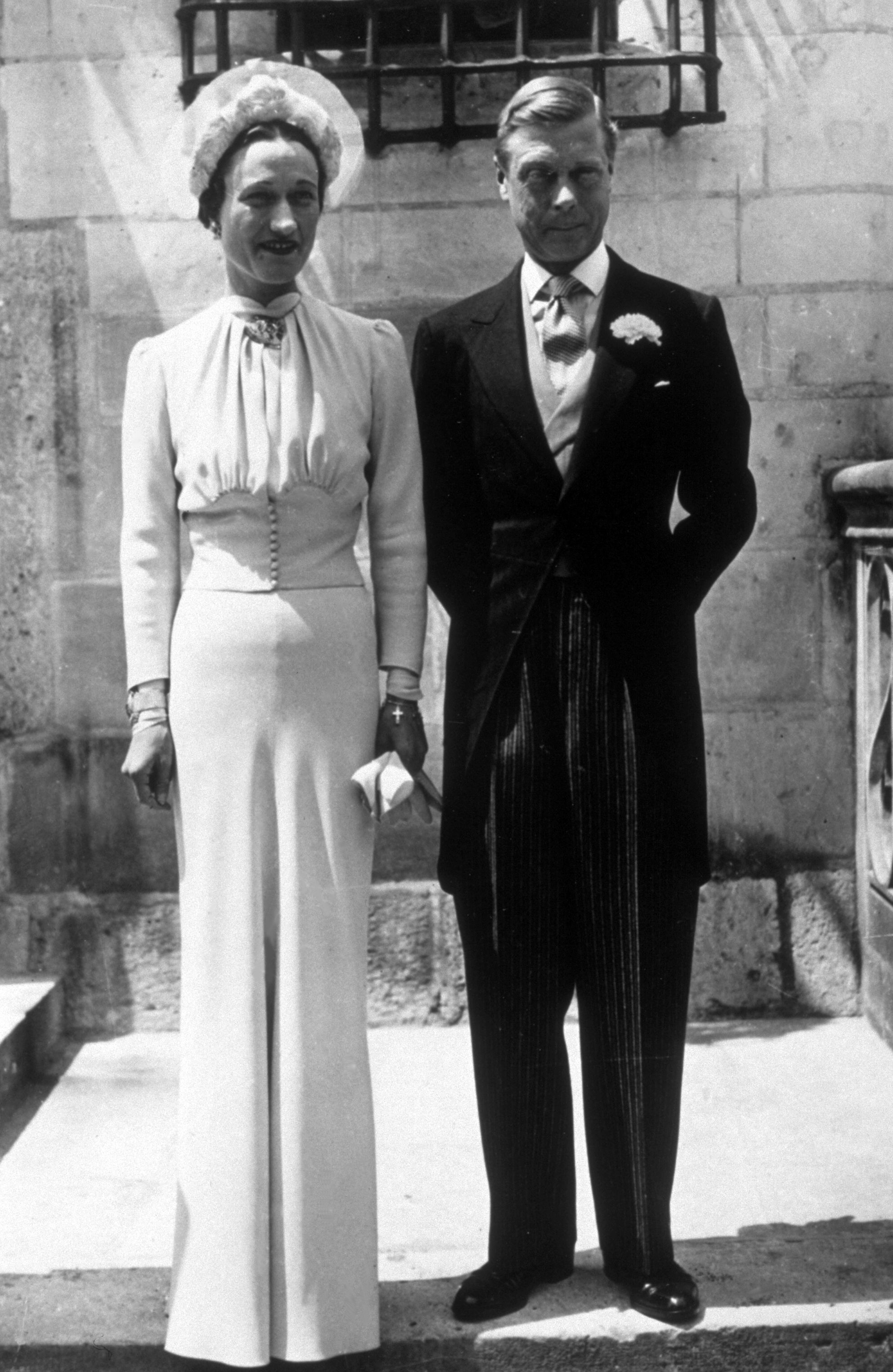
Queen Elizabeth II (m. 1947)
When Queen Elizabeth married Philip, the Duke of Edinburgh in 1947, WWII had only ended two years prior — which meant that the young royal had to purchase the tulle, chiffon and silk for her wedding gown using ration coupons that she had saved (Queen Elizabeth was generously granted 200 extra ration coupons as well, for the royal wedding). The war’s political aftermath also affected the fabric of the dress; the silk used for Elizabeth’s gown was from China, as opposed to WWII foes Japan or Italy. The British royal wedding dress, which was designed by Norman Hartnell and inspired by a Botticelli painting, had 10,000 seed pearls sewn into the floral design of the dress and took 350 women seven weeks to make.
Elizabeth paired her gown with a veil and the Queen Mary’s Fringe Tiara, which she borrowed from her mother, Queen Elizabeth I, but the silver, diamond and gold tiara broke the morning of the wedding and was hastily repaired by a jeweler before the ceremony. If you look closely, you can see a slight gap towards the center of the tiara.
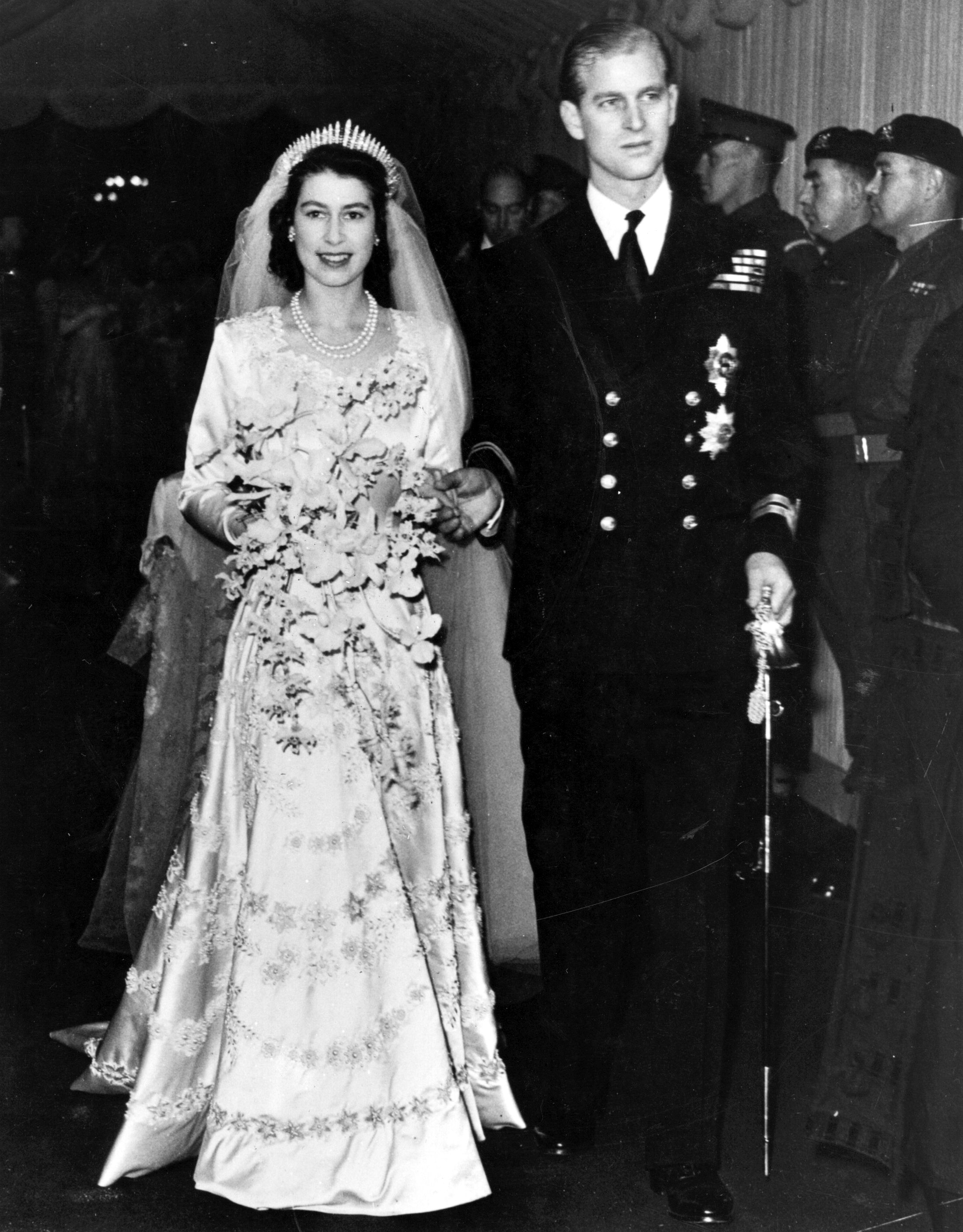
Princess Margaret, Countess of Snowdon (m. 1960)
Princess Margaret married fashion photographer Antony Armstrong-Jones in a full-skirted silk organza wedding dress designed by Norman Hartnell, who designed Queen Elizabeth’s silk and lace wedding gown just 13 years earlier. While Margaret’s British royal wedding dress had very little embellishment, her dramatic silhouette style (which reportedly required close to 100 feet of fabric) was complemented by a cathedral length veil held in place by the Poltimore tiara.
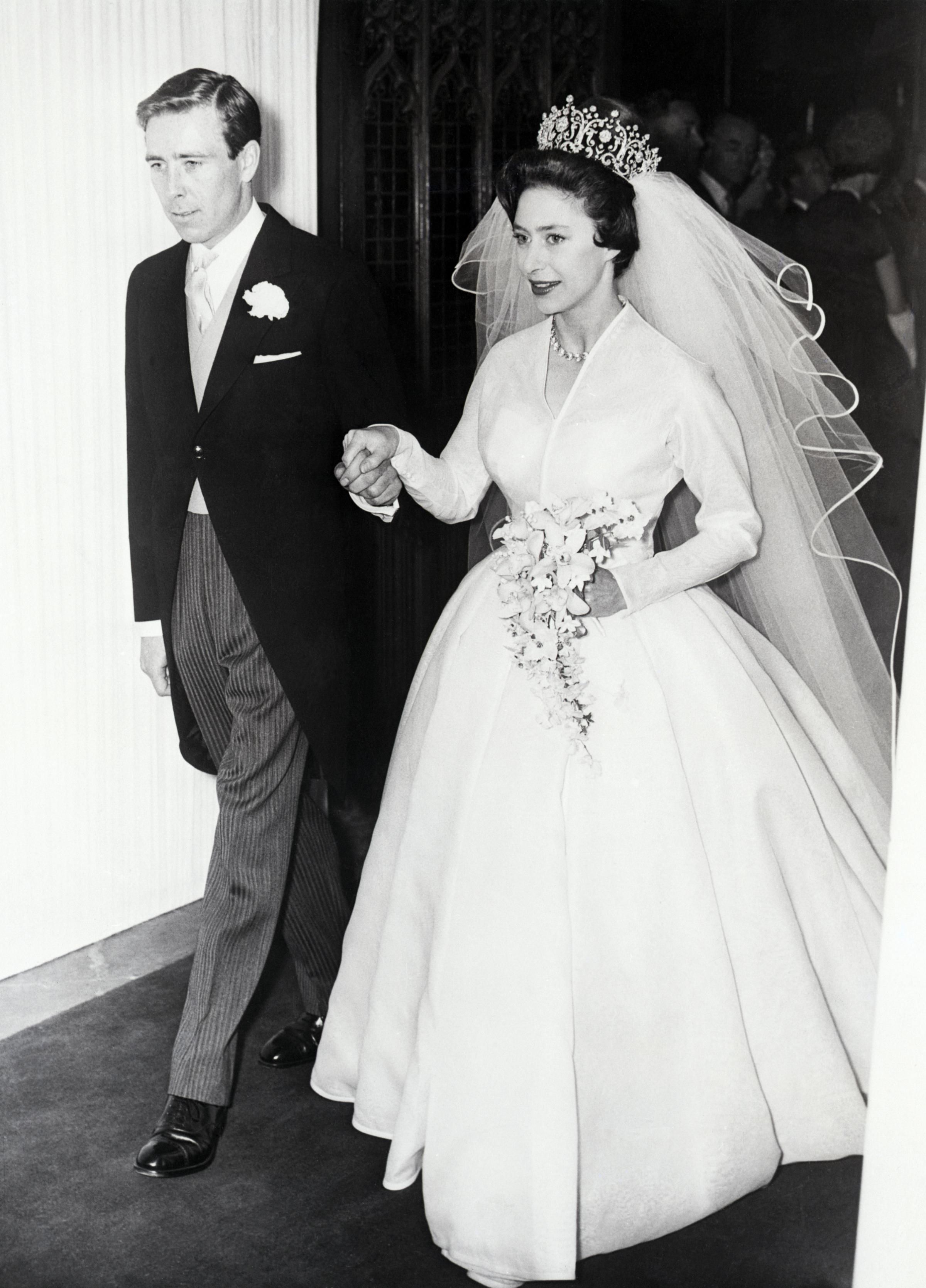
Katharine, Duchess of Kent (m. 1961)
When Katharine, the Duchess of Kent, married Prince Edward, she wore a gown designed by John Cavanagh, who helped create her mother-in-law Princess Marina’s own wedding day look. Her white silk gauze dress featured a high neckline and long sleeves and a commanding train that definitely contributed to why the gown took 273 yards of fabric.
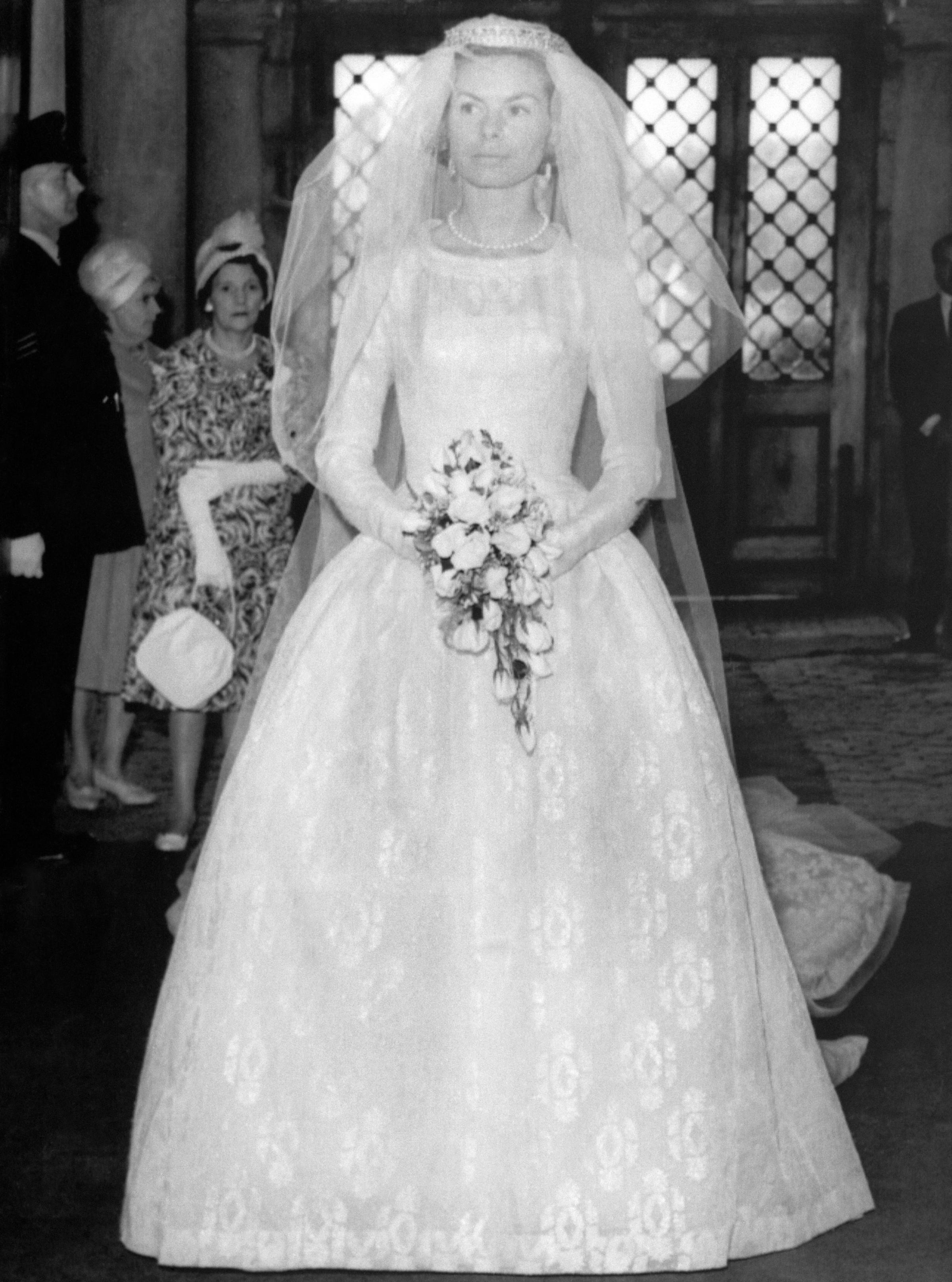
Princess Alexandra, the Honourable Lady Ogilvy (m. 1963)
Princess Alexandra, Queen Elizabeth’s first cousin, wore a John Cavanagh dress to marry Scottish businessman Sir Angus Ogilvy. Her decision to work with John Cavanagh was a family affair; the designer not only helped make her mother, Princess Marina’s wedding gown while working for another design house, but he also made her sister-in-law Katharine, Duchess of Kent’s wedding dress.
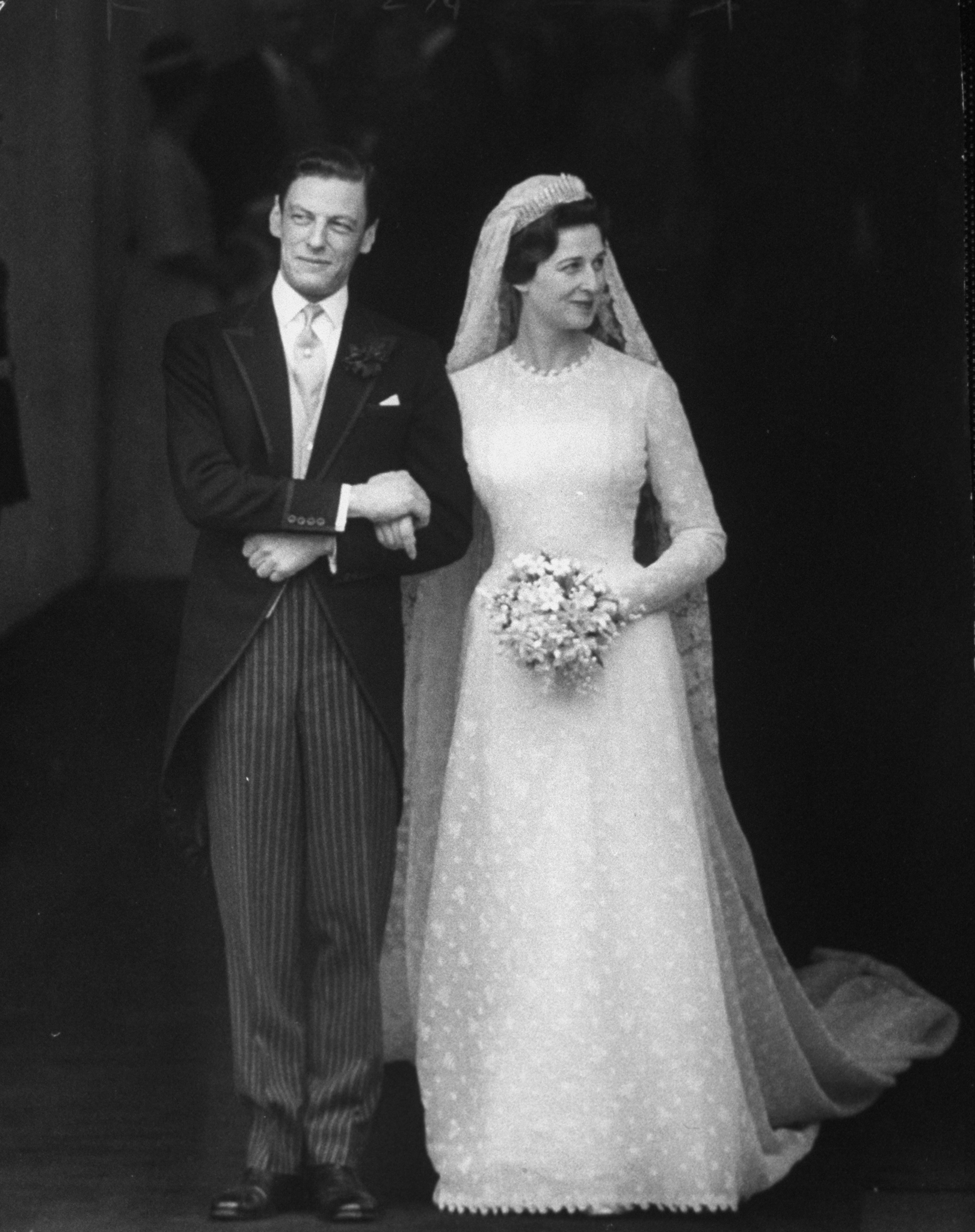
Anne, Princess Royal (m. 1973)
Princess Anne wore a high-necked embroidered gown by Maureen Baker for the label Susan Small to wed Captain Mark Phillips. The dress was designed in the Tudor style and featured long medieval sleeves that were edged in pearls; pearls and silver thread also embellished the back of the princess’ gown. She paired the gown with a voluminous veil and held it in place with Queen Mary’s fringe tiara, the same tiara that her mother, Queen Elizabeth, wore to her wedding.
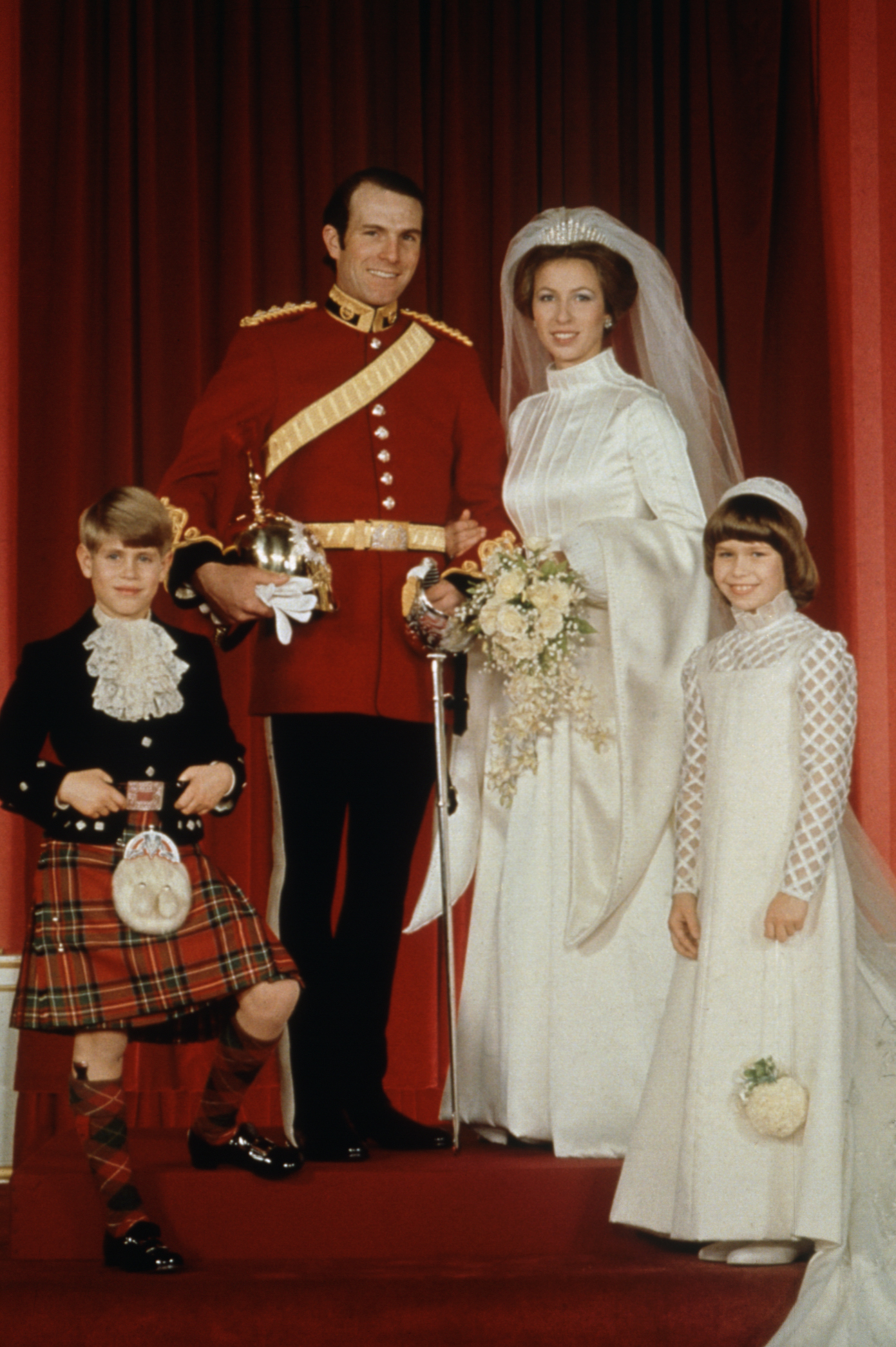
Diana, Princess of Wales (m. 1981)
Princess Diana’s wedding dress remains one of the most iconic wedding looks in history, thanks to its elegant and feminine style. The dress was designed by then husband and wife team David and Elizabeth Emanuel and was made out of ivory silk taffeta with a piece of antique lace that had belonged to Queen Mary embellishing the gown; Diana also paid homage to the old adage for brides, having something old (Queen Mary’s lace), something new (the dress itself), something borrowed (her tiara, which belonged to her family since the 18th century), and something blue (a small bow sewn into the waist of her dress).
The dress featured puffed sleeves, ruffles on the bodice and arm openings and a 25-foot train that was only surpassed by her 153 yard veil, which she wore with the Spencer tiara. The dress was a closely guarded secret until the ceremony — so much so that a decoy gown was made to be worn instead in case the actual gown was leaked to the press.
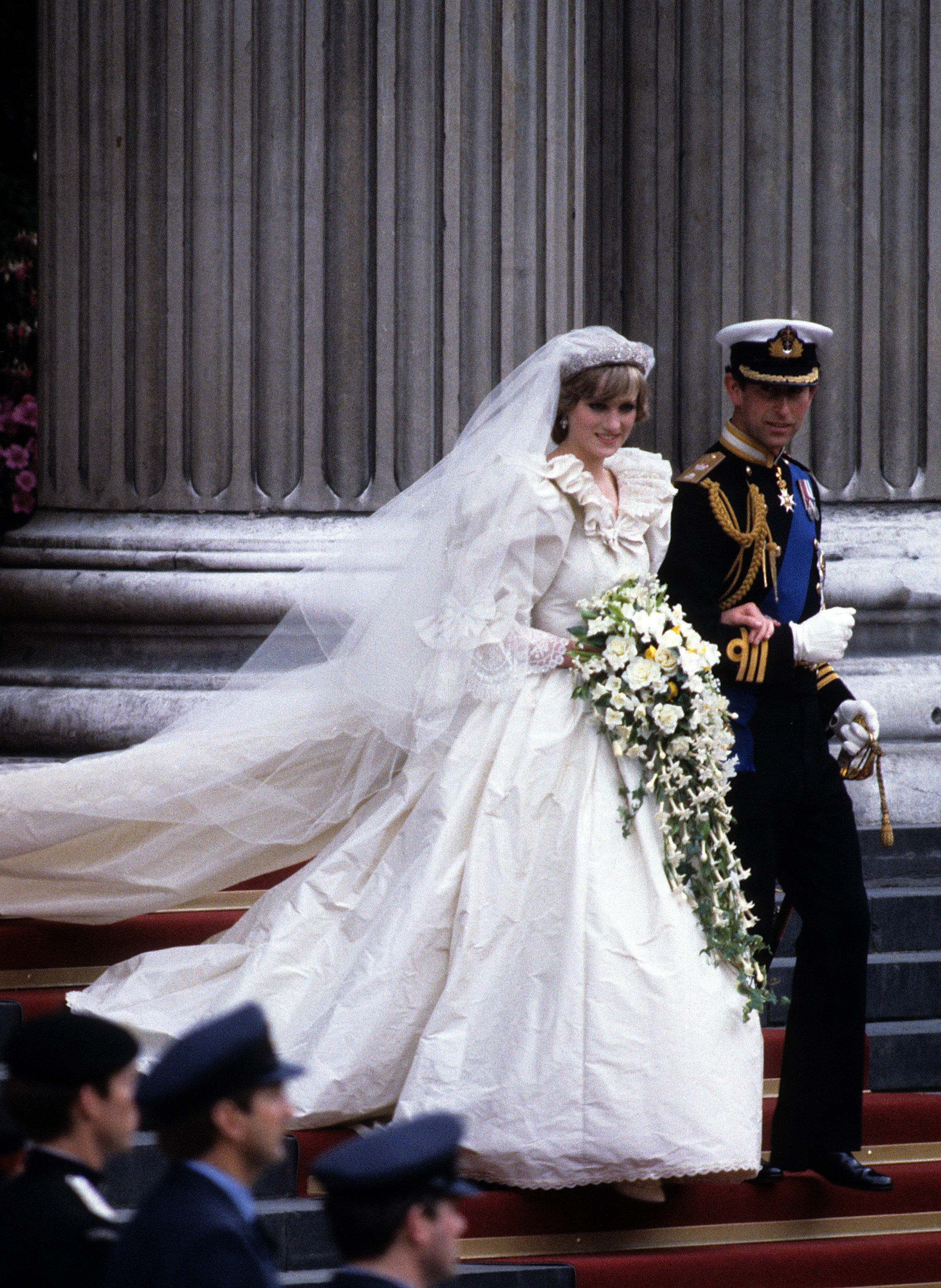
Sarah, Duchess of York (m. 1986)
When Sarah Ferguson married Prince Andrew, she wore an elegant ivory duchesse satin gown that was designed by Lindka Cierach. The dress had a 17-foot long train and intricate embroidery and beading that referenced her union with the Prince: their initials intertwined, motifs from her family crest, and anchors and waves that paid tribute to Prince Andrew’s sailing background.
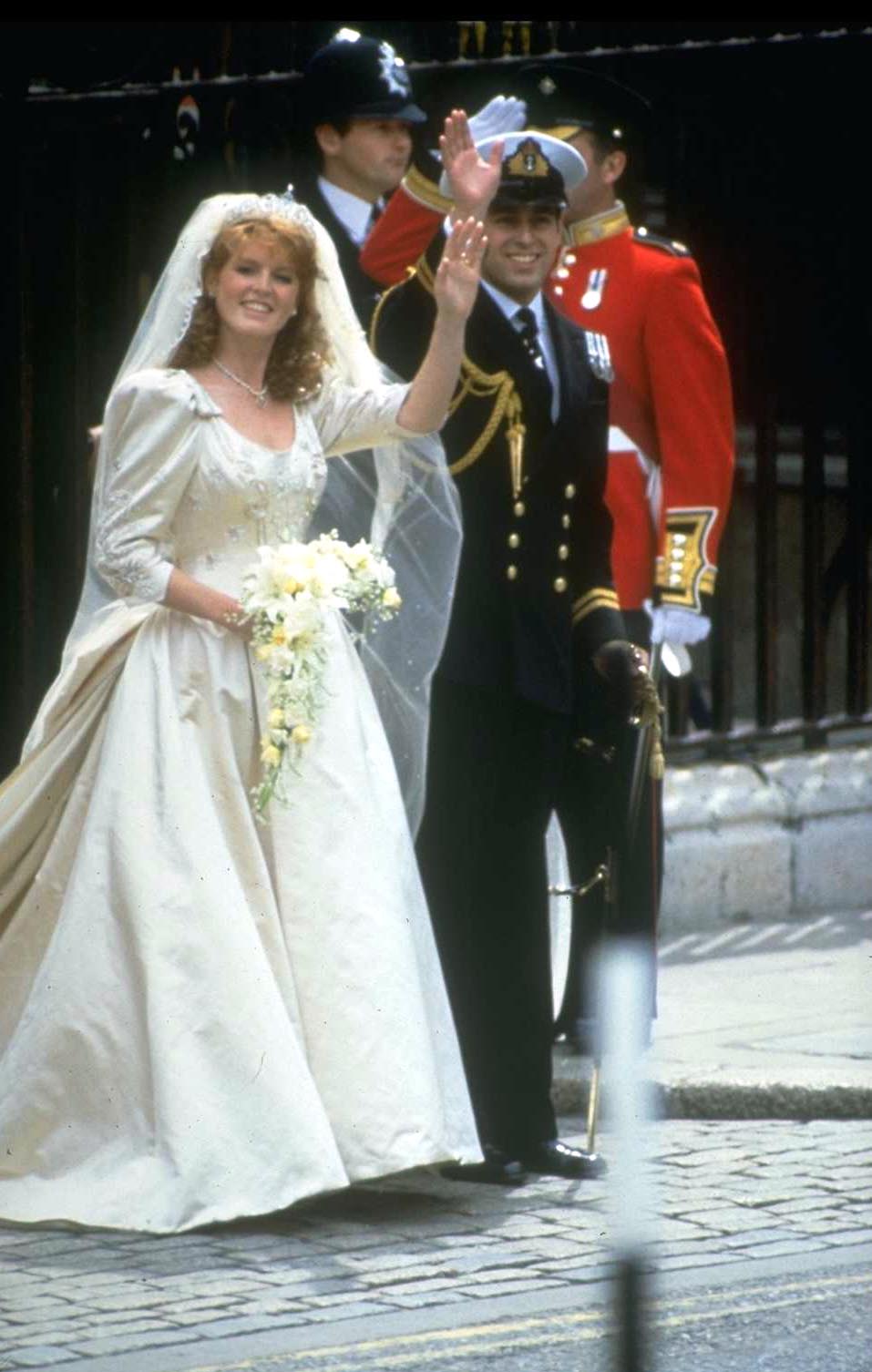
Sophie, Countess of Wessex (m. 1999)
Sophie Rhys-Jones tied the knot to Queen Elizabeth’s youngest son, Prince Edward, Earl of Wessex, in 1999, at St. George’s Chapel, the same location where Meghan Markle and Prince Harry will say their vows this spring. For her big day, Sophie selected a long-sleeved gown by British fashion designer Samantha Shaw that was embellished with 325,000 crystals and pearls. Sophie wore a tiara from the Queen’s private collection and a black and white pearl necklace and earrings set designed by her husband as a wedding gift. Both the jewelry and the tiara were made by Asprey and Garrard.
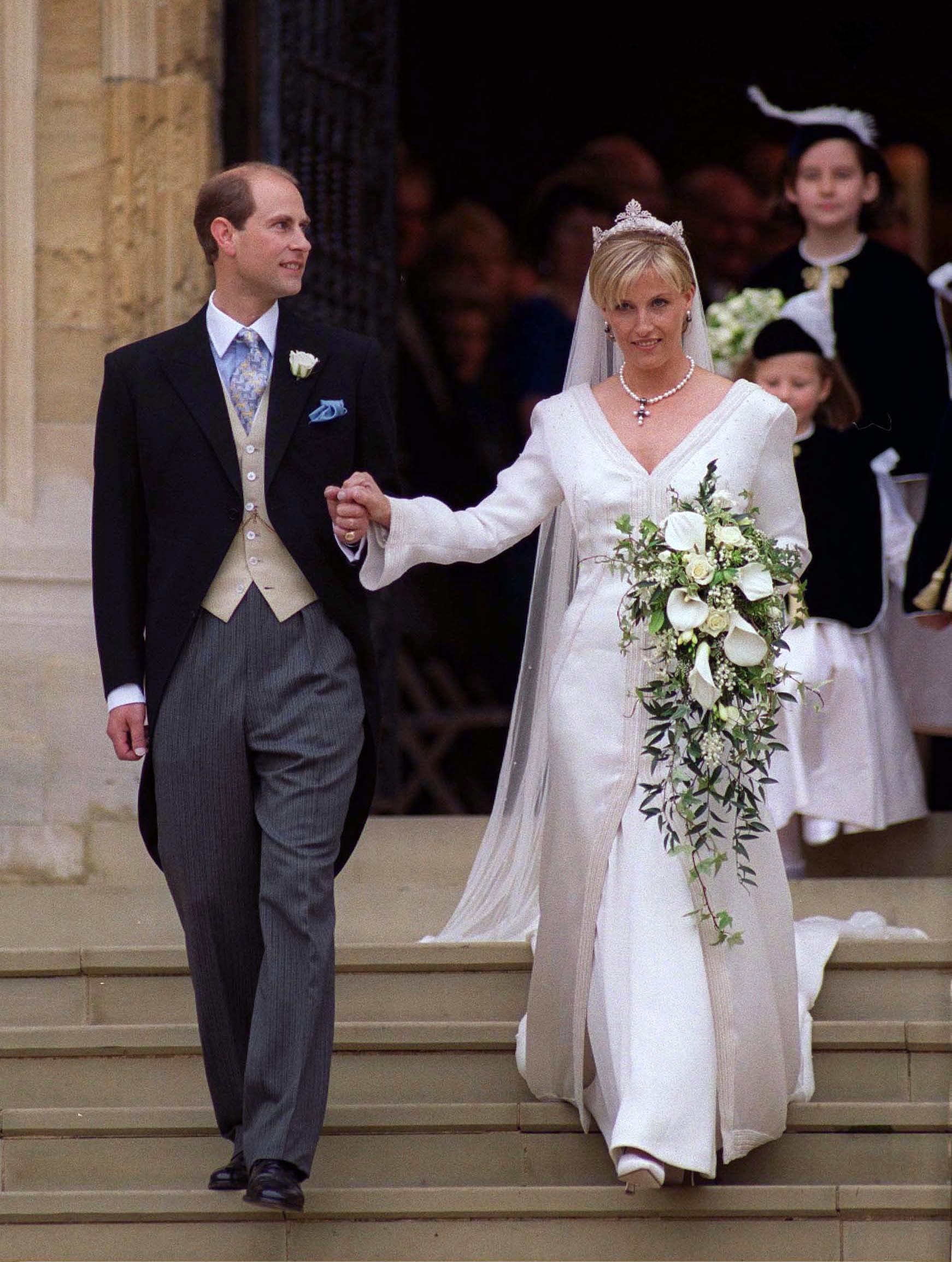
Camilla, Duchess of Cornwall (m. 2005)
For her second wedding to Prince Charles in 2005, Camilla Parker Bowles wore a cream dress with a embroidered silk overdress by London designers Antonia Robinson and Anna Valentine, under the label Robinson Valentine (now known as Anna Valentine). Camilla’s dress’ sleek and clean silhouettes was more low-key than other royal brides, most likely because it was a second marriage for both herself and the Prince. She paired her wedding ceremony ensemble with a lace and feather hat by storied British hat designer Philip Treacy.
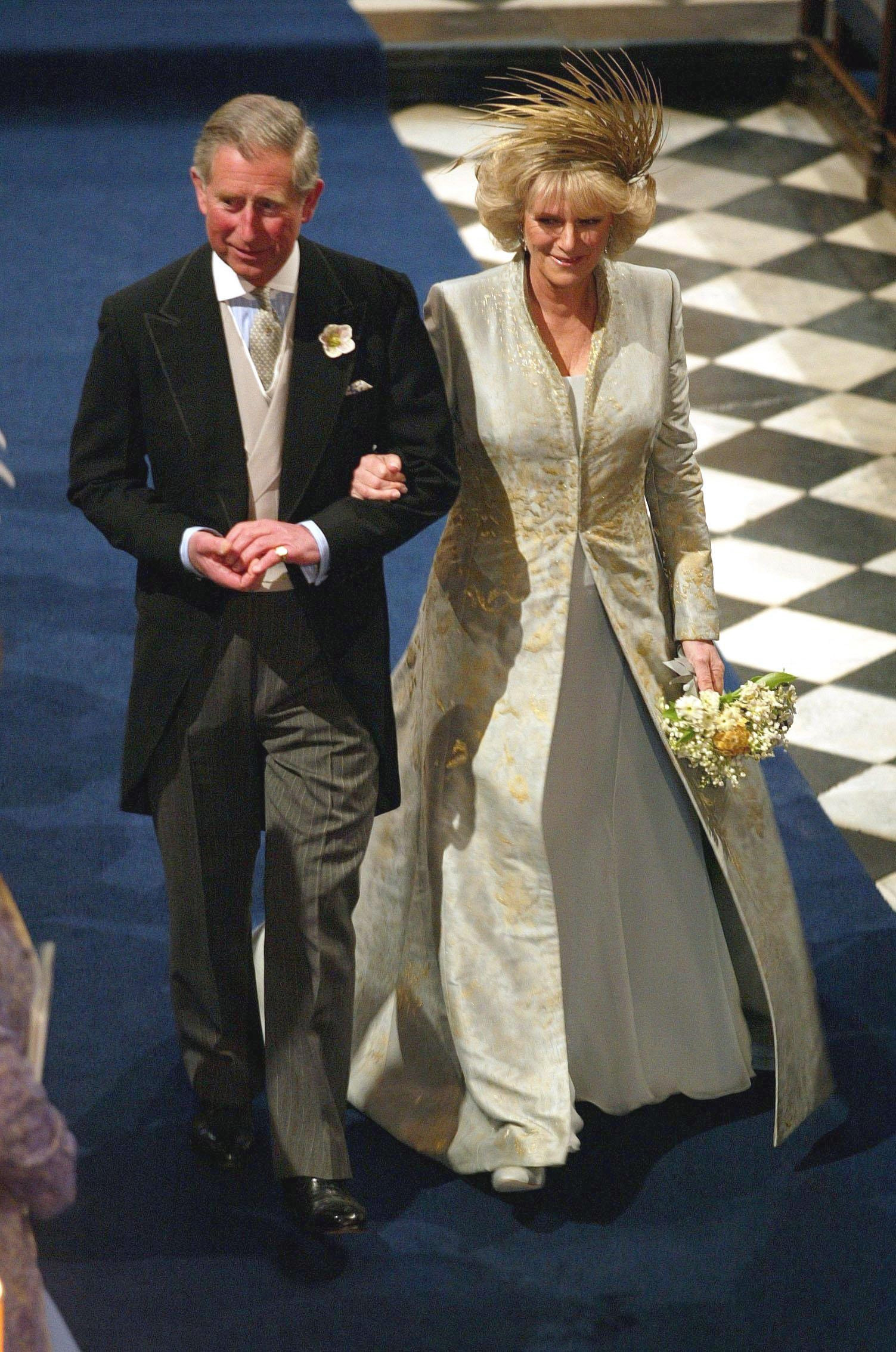
Catherine, Duchess of Cambridge (m. 2011)
Kate Middleton’s wedding gown was one of the most highly-anticipated reveals of her 2011 wedding to Prince William. Neither the design of the dress or the designer were announced until the bride was on her way to the wedding ceremony. The iconic and oft-copied wedding dress was designed by Sarah Burton at Alexander McQueen and featured a relatively deep-v neckline, a 9-foot train, and lace overlay, as well as Victorian-inspired corsetry and padding on the hips to create the illusion of a more narrow waist. Like Diana, Middleton also followed the bridal tradition of having something old, new, borrowed, and blue, with an old lace technique being used for the lace on her gown, new earrings (a gift from her parents), a blue ribbon sewn into the inside of the dress, and the Queen’s Cartier halo tiara, borrowed to hold her veil in place.
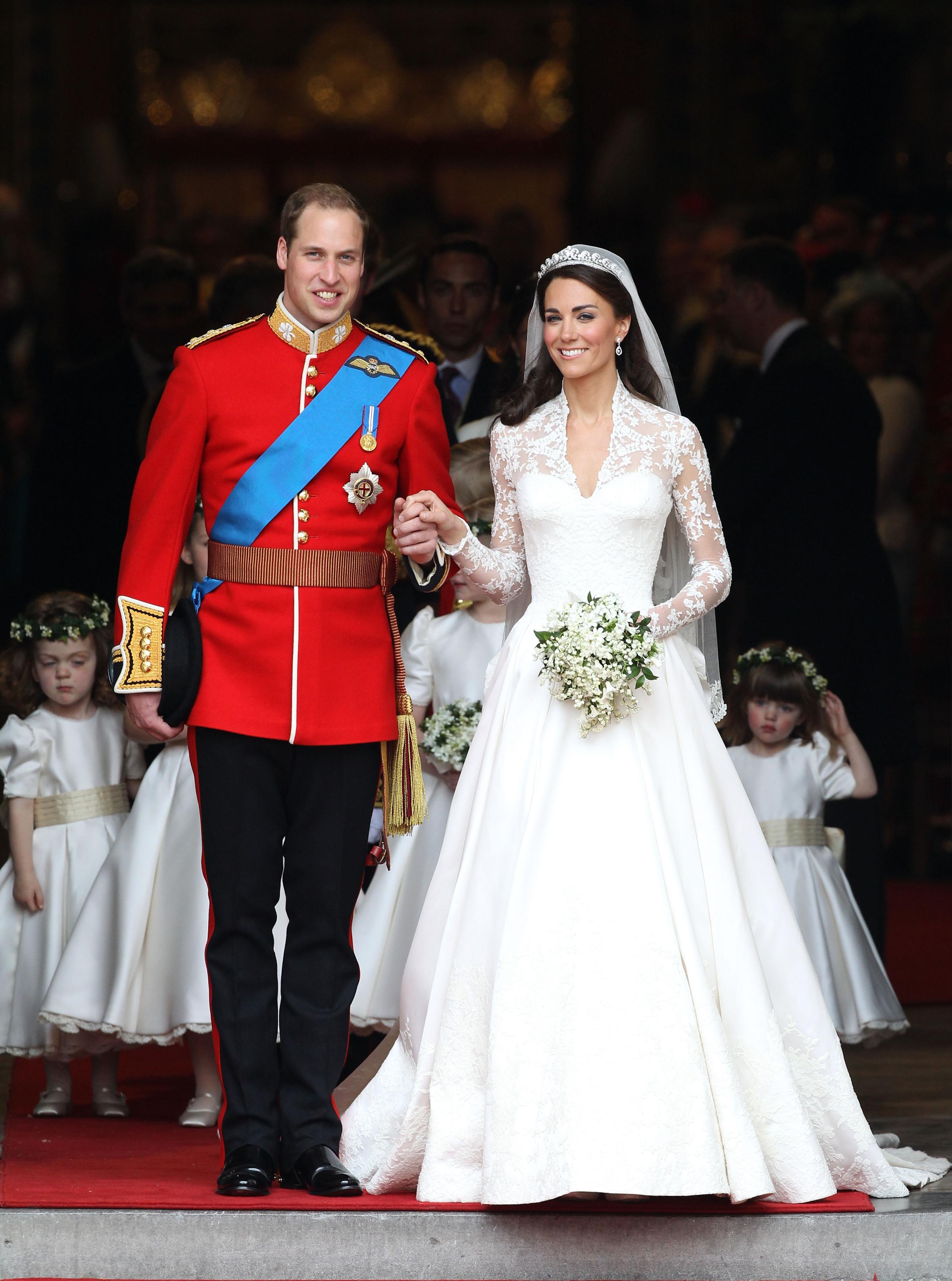
More Must-Reads from TIME
- Cybersecurity Experts Are Sounding the Alarm on DOGE
- Meet the 2025 Women of the Year
- The Harsh Truth About Disability Inclusion
- Why Do More Young Adults Have Cancer?
- Colman Domingo Leads With Radical Love
- How to Get Better at Doing Things Alone
- Michelle Zauner Stares Down the Darkness
Write to Cady Lang at cady.lang@timemagazine.com